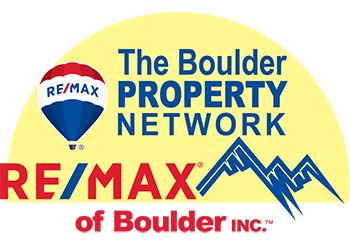
Most people begin their real estate journey by purchasing their own home – and for many, that’s where it ends. When motivated buyers explore their first investment property, they’re often told they’ll need a 20 to 25% down payment. Faced with the challenge of saving that much, most stop there.
But there’s another path. For those willing to relocate more often, it’s possible to grow a real estate portfolio with much smaller down payments – and build wealth along the way.
Move often, build a real estate portfolio
This investment strategy is best suited for individuals who are willing to relocate frequently. While frequent moves can be challenging for families with school–aged children, some may still relocate within the same neighborhood as they acquire multiple single–family homes. A young couple might take advantage of the flexibility before starting a family, while empty nesters could use this approach to grow their portfolio before retirement. As with most investments – especially real estate – the earlier you start, the greater the potential rewards.
Keep the old house
Throughout my career, whenever a client called to sell their current home and move up to the next, I often encouraged them to keep the old home as a rental. Many were surprised that I wasn’t eager to list it for a commission – but my advice came from a broader perspective. Holding onto that property is the first step toward building a real estate portfolio. Even repeating this just four times before retirement could leave someone in their fifth personal residence with four rental properties – providing steady income for years to come.
Buy early in life, buy often
In the earlier example, someone could acquire four properties over a 30–year career by using owner–occupied financing each time they move to a new location. But what if the goal was bigger – say, 10 single–family homes? In theory, you could move once a year for 10 years, buying and keeping each property along the way. I say “in theory” because lending rules are always changing.
The first step in starting this program is picking a lender to obtain a loan pre–approval. In addition to getting pre–approval, check with the lender about the current rules on the following items:
- What is the down payment required for owner–occupied financing? Markets change, but a 5% down payment would likely still be available.
- What will the interest rate be? Will Private Mortgage Insurance (PMI) be required?
- How long do you need to live in it before buying the next owner–occupied home?
- How is rent considered when qualifying for a property purchase and future ones?
- Is there a limit on the number of mortgages I can have?
- Where do I stand on qualifying for future purchases?
Keeping moving in the program
Buying 10 properties in 10 years! Is it possible? Maybe, maybe not.
There are many factors involved.
- Current lending rules
- Is there any inventory to purchase?
- What is the price range that is acceptable for owner–occupancy, yet suitable for being a rental after moving on to the next home?
- What is the rent? What is the loan payment?
- What are the other expenses?
- After accounting for the loan payment and expenses, is the cash flow positive or negative? If negative, it may take a while longer for rents to catch up to the loan payment and expenses. If there is a negative cash flow, you can think of it as a deferred down payment. You simply need to determine how much negative cash flow your budget can accommodate.
Will this program work?
Again, there are many factors involved.
Variable factors:
- True appreciation of real estate over time.
- Rental increases over time.
- Taxes, maintenance, repair and miscellaneous expenses.
Fixed factors:
- Principal reduction
The success of the program depends on values and rents increasing over time. Each month, when a loan payment is made, hopefully supported by rent, the loan balance decreases. In a perfect world for investors, values and rents continue to rise, and each month the property gets closer to being owned free and clear.
FHA Financing
For years, FHA has helped first–time homebuyers get started with low down payments – and their programs don’t stop at single–family homes. FHA also offers owner–occupied financing for 2–, 3–, and 4–unit properties, as long as you live in one of the units. This can be a powerful way to begin building an investment portfolio. While maximum loan limits can make it less practical in some markets, in areas where values fit within those limits, you could purchase a 4–unit property with as little as 3.5% down.
Duane graduated with a business degree and a major in real estate from the University of Colorado in 1978. He has been a Realtor® in Boulder since that time. He joined RE/MAX of Boulder in 1982 and has facilitated over 3,000 transactions over his career. Duane has been awarded Realtor® Emeritus by the National Association of REALTORS and the Circle of Legends by RE/MAX LLC. Duane is also the author of two books, REALTOR for Life and The Velocity of Wealth. You can reach out to Duane at BoulderPropertyNetwork.com or at DuaneDuggan@boulderco.com
